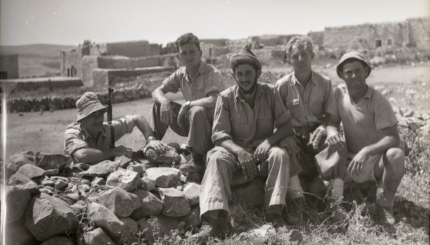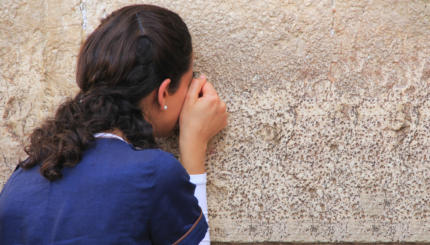Reprinted with permission from Jewish Magic and Superstition: A Study in Folk Religion.
Of all the charges against the Jewish people the one that has enjoyed the hardiest tenacity and the utmost notoriety, and has produced the direst consequences, is the ritual murder accusation. In its popular version it foists upon Jewish ritual the requirement of Christian blood at the Passover service.
The subject of much study and infinitely more polemics, its absurdity has been conclusively established, but the true nature of the accusation has never been made sufficiently clear. The legend as we know it has experienced several redactions. In its pristine form it was the product of ancient superstition–and of the idea of the Jew as sorcerer.
Magical Uses of the Human Body
One of the most pervasive beliefs was in the great utility for medicinal and magical purposes of the elements of the human body. Medieval magic is full of recipes for putting to occult use human fat, human blood, entrails, hands, fingers; medieval medicine utilized as one of its chief medicaments the blood of man, preferably blood that had been freshly drawn, or menstrual blood. The ritual murder accusation was the result of these beliefs.

Help us keep Jewish knowledge accessible to millions of people around the world.
Your donation to My Jewish Learning fuels endless journeys of Jewish discovery. With your help, My Jewish Learning can continue to provide nonstop opportunities for learning, connection and growth.
There is on record at least one accusation against a Jew, dating from the 13th century, of despoiling a servant girl, whom he was said to have drugged, of some flesh which he intended to put to a magical or medicinal use. This was the motive which was believed to have prompted many assumed ritual murders.
One of the first medieval references to this accusation, made by Thomas of Cantimpre early in that century, attributed the need for Christian blood to the widespread Jewish affliction of hemorrhages (some later accounts changed the malady to hemorrhoids), which could be cured only by the application of this blood.
The Jews of Fulda (Hesse-Nassau), accused in 1235 of murdering five children, are said to have confessed that they did so in order to procure their blood for purposes of healing. Matthew Paris’ contemporary account of the alleged crucifixion of Hugh of Lincoln by Jews in 1255 ascribed to them the intention of using the boy’s bowels for divination.
To skip a century and a half, in May 1401, the city council of Freiburg (in Breisgau) wrote to Duke Leopold requesting the total expulsion of the Jews from their city, the foremost count against them being that they periodically slaughtered a Christian child, for “all Jews require Christian blood for the prolongation of their lives.”
The only Christian statement on the ritual murder charge against the Jews of Tyrnau in 1494 explains their need of this blood on several grounds: “Firstly, they (the Jews) were convinced by the judgment of their ancestors that the blood of a Christian was a good remedy for the alleviation of the wound of circumcision. Secondly, they were of the opinion that this blood, put into food, is very efficacious for the awakening of mutual love. Thirdly, they had discovered, as men and women among them suffered equally from menstruation, that the blood of a Christian is a specific medicine for it, when drunk. Fourthly, that they had an ancient but secret ordinance by which they are under obligation to shed Christian blood in honor of God in daily sacrifices in some spot or other.”
As late as the beginning of the 18th century, it is reported that in Poland and Germany tales were told and songs sung in the streets, “how the Jews have murdered a child, and sent the blood to one another in quills for the use of their women in childbirth.”
A Better Understanding of Jewish Persecution
It is evident from these instances that the suspicion of magic was behind the accusation of child murder. There is no mention of the Passover, of kneading the blood into the unleavened cakes, or drinking it at theSeder service, all of which are late refinements. The records of the early accusations are meaningless unless viewed against the background of medieval superstition.
A modern writer who has made a careful study of Christian magic and witchcraft, and who proves himself as credulous and superstition-ridden as the period he examines, expresses exactly the medieval view, which is his as well: Jews were persecuted “not so much for the observance of Hebrew ceremonies, as is often suggested and supposed, but for the practice of the dark and hideous traditions of Hebrew magic. Closely connected with these ancient sorceries are those ritual murders?In many cases the evidence is quite conclusive that the body, and especially the blood of the victim, was used for magical purposes.”
Montague Summers, the writer of these lines, believes this “evidence” implicitly. If a present-day Catholic can so blindly accept the truth of these accusations of the use of Christian blood by Jews for magical purposes, how all-compelling this “evidence” must have been for his medieval predecessors.
Jews & Sorcery
Most of the charges leveled against the Jews fit into one or another of these categories. The surprising thing is that the specific crimes of sorcery of which Jews stood accused were in the end so limited in nature. Or perhaps this is not so surprising when we consider that these accusations derived not from observed acts of Jews, but from the general picture of “sorcerer” which the Church crusade against sorcery and the later witch-cults painted so vividly.
Prior to the inception of the Inquisition in the 13th century, excesses attributed to sorcery had been punished by the secular authorities simply as criminal acts. When the Church undertook to stamp out sorcery, it branded its practitioners as devil-worshiping anti-Christians.
Sorcerers and witches, brought before the bar of the Inquisition, were accused of, and confessed to, the adoration of Satan, the desecration of the host and other consecrated objects, the sacrifice of infants, cannibalism, the use of human ingredients, particularly blood and fat, in their salves and potions, effecting the death of their enemies by means of waxen images baptized in their names, poisonings, all the details of what came to be a stereotyped catalogue of crimes.
One cannot fail to notice especially the constant recurrence of the charge of child sacrifice in these trials, and the importance of human blood in the witches’ ritual; these were apparently the most distinguishing elements in the technique of the sorcerer and the witch, as disclosed to popular view by the campaign of the Church.
We need but recall the famous trial in 1440 of the Marshal Gilles de Rais, aid and associate of Joan of Arc, at which he was accused and convicted of murdering several hundred children whose blood and bodies he employed for magical purposes. It is these charges that determined the character of the sorcery propaganda against the Jews.


